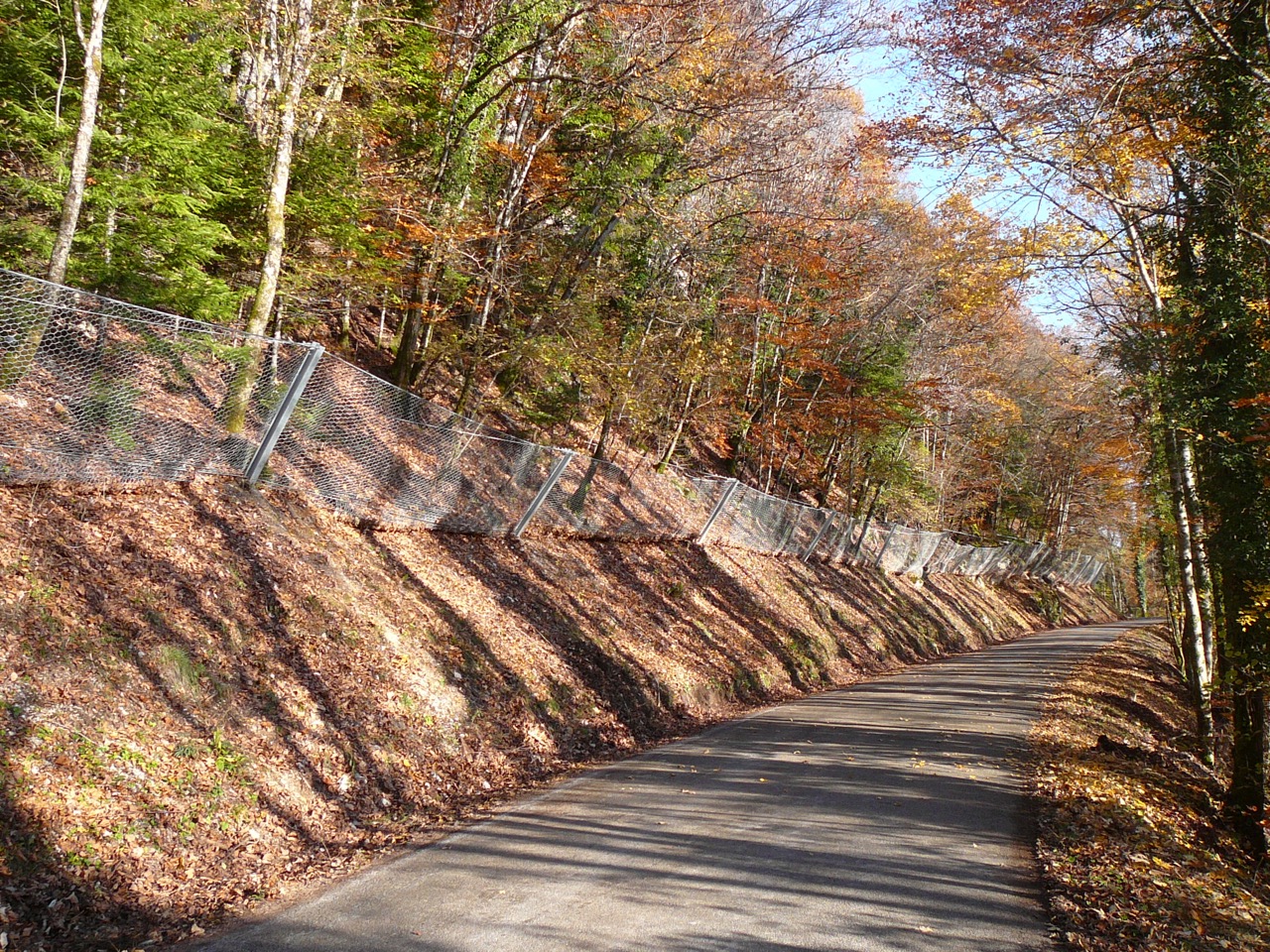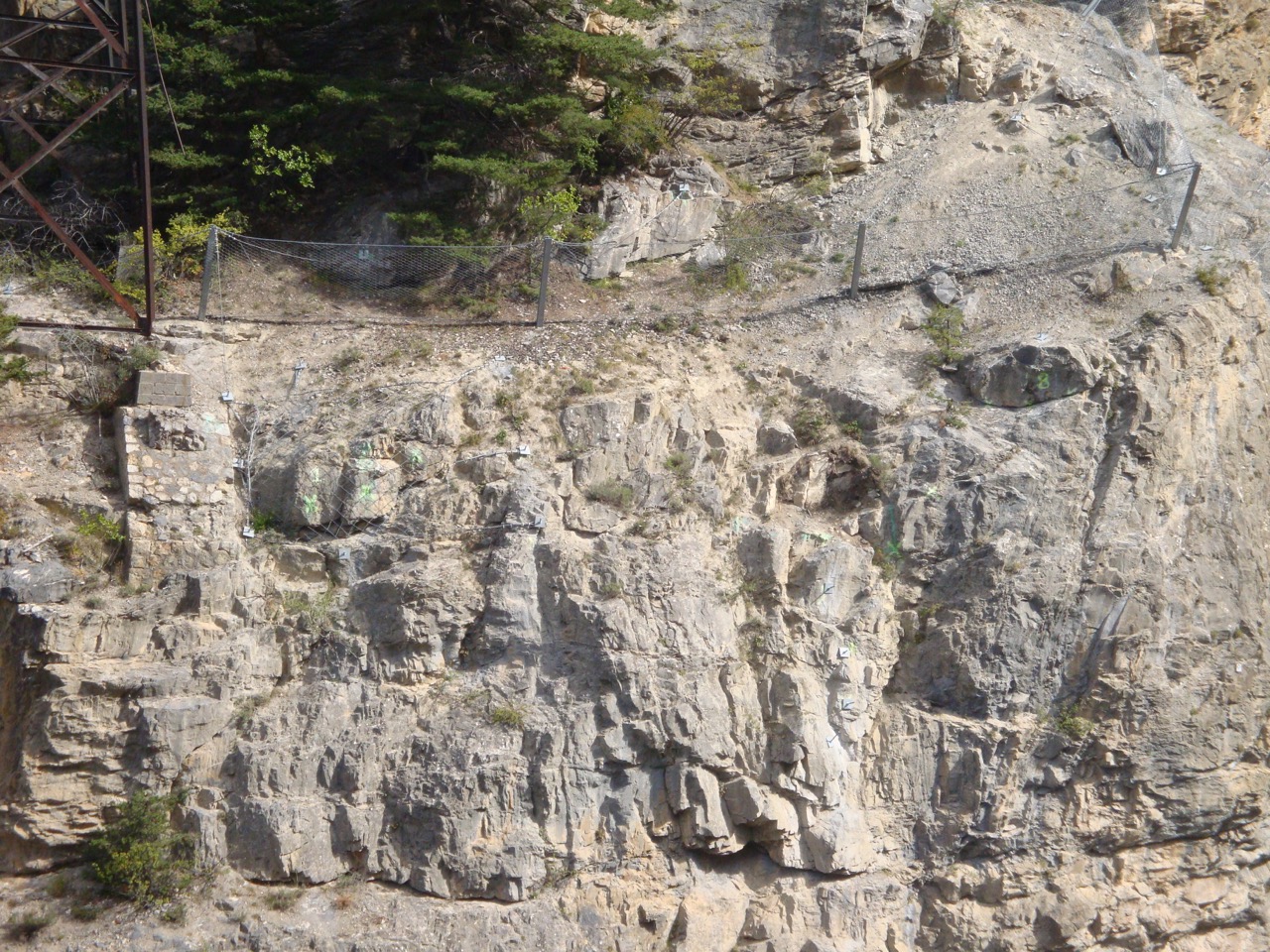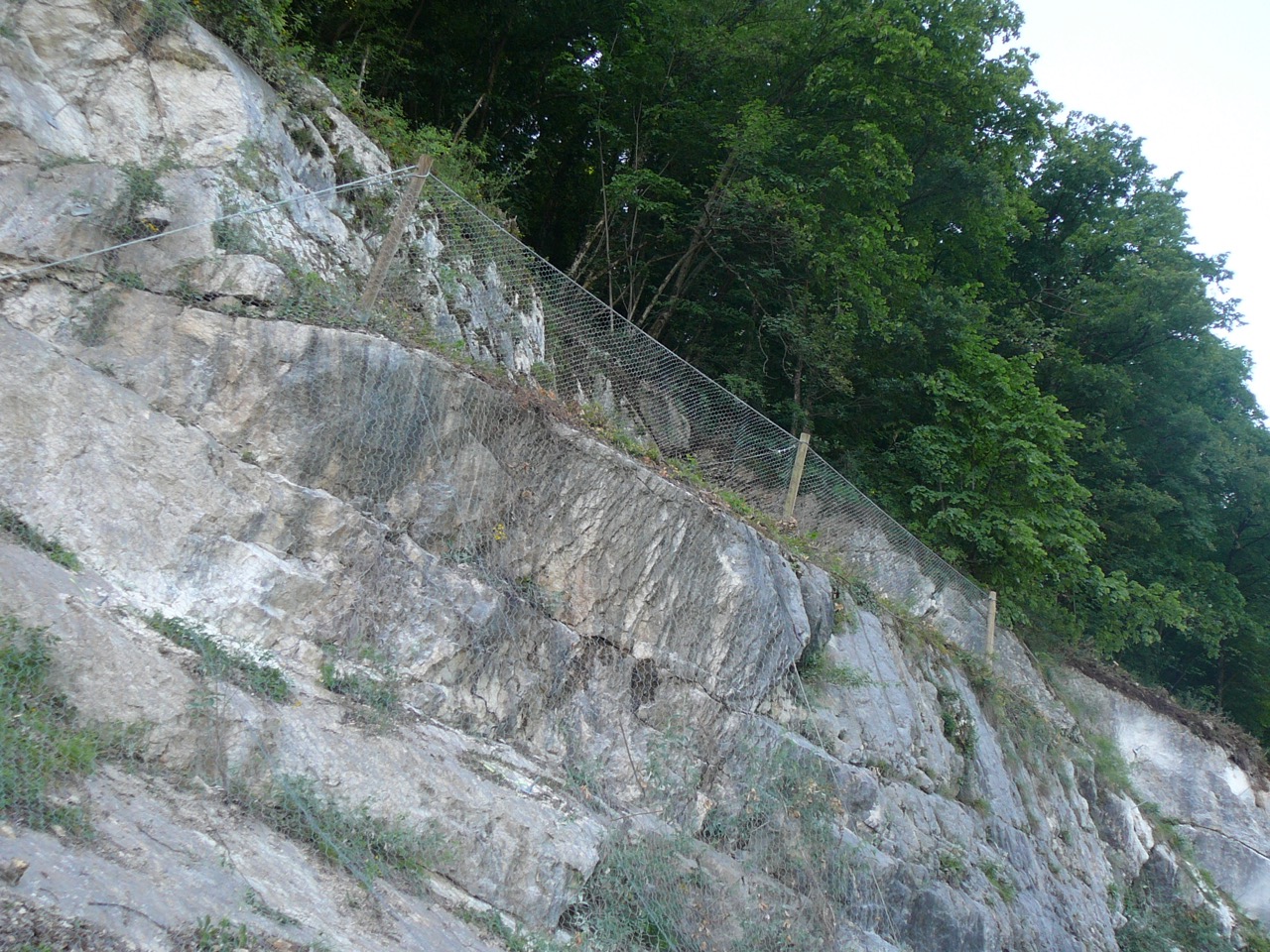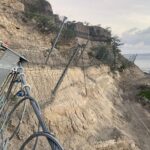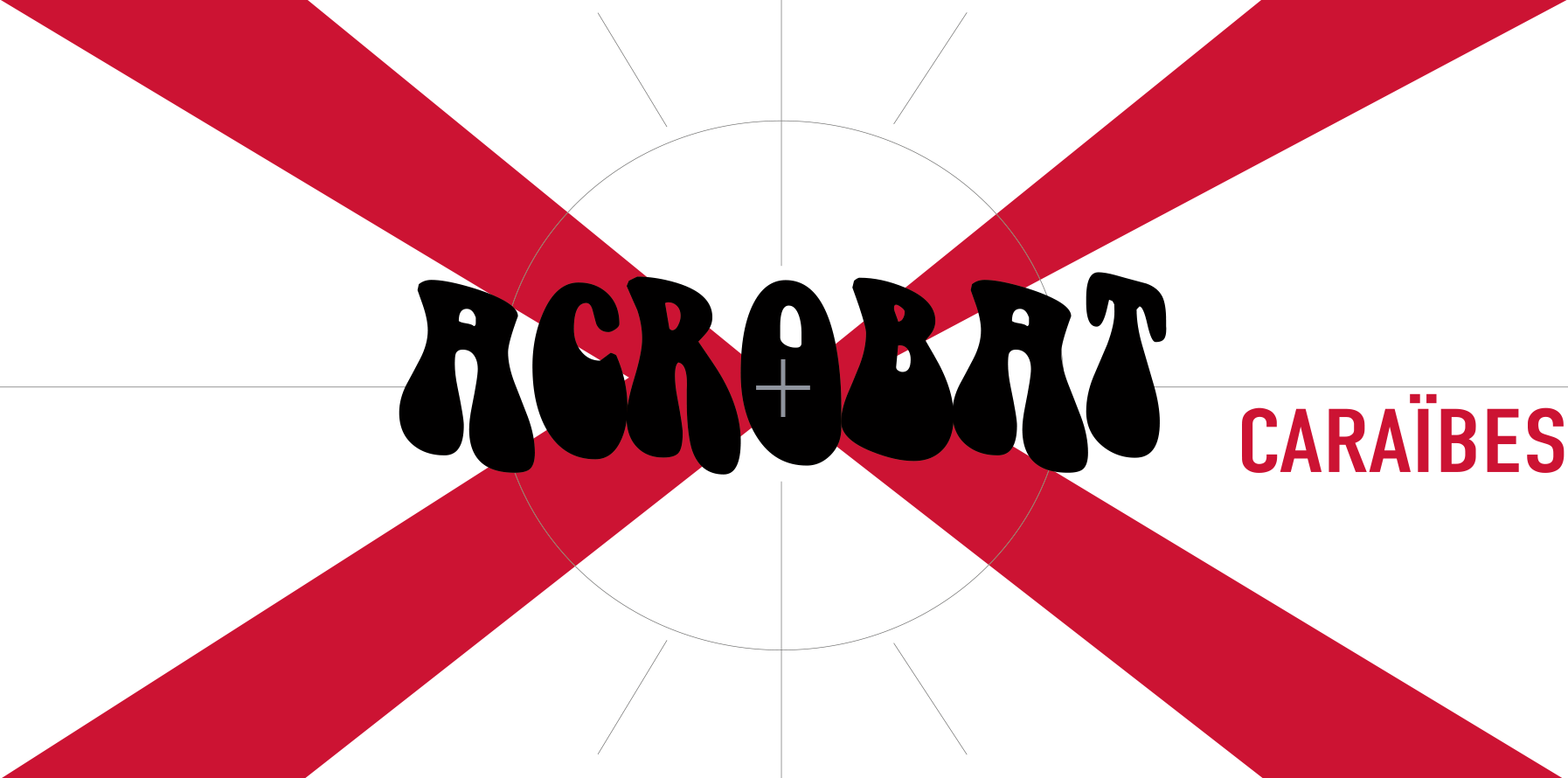
Passive linear protection using rockfall barriers
What is a Rockfall Barrier?
Rockfall barriers are passive protection systems designed to limit the propagation of low-intensity rock instabilities. Unlike active solutions that address the source of rockfalls, rockfall barriers intercept falling materials downstream, protecting infrastructure along linear stretches, such as roads or railway lines.
This solution is typically adopted when:
- Rockfall risks are widespread across a large area.
- Active solutions are not feasible due to complexity or cost constraints.
ETAG 027 Standards: Precision in Design
Rockfall barriers must comply with European ETAG 027 standards, which define performance requirements based on impact energy levels (MEL – Maximum Energy Level).
- For energies below 100 kJ:
- Class 1 barriers (25 kJ) and Class 2 barriers (50 kJ) can be designed according to NFP 95-308 standards.
- No full-scale performance testing is required for these classes.
- For energies of 100 kJ or more:
- The ETAG 027 standard applies.
- Full-scale performance testing is mandatory to validate barrier effectiveness.
The design of rockfall barriers involves precise calculations that consider:
- Block size and impact energy.
- Potential trajectories of falling rocks.
- Interception heights required to ensure optimal performance.
Advantages and Limitations of Rockfall Barriers
Advantages:
- Cost Control: Pre-installation geotechnical studies are generally limited, reducing initial project costs.
- Versatility: Adaptable to various situations, especially along roadways or areas with low rockfall risks.
Limitations:
- Regular Maintenance: Frequent cleaning is required to prevent material build-up, which could compromise the system’s effectiveness.
- No Source Treatment: Rockfall barriers do not address the root causes of instabilities, leading to potentially recurring and costly maintenance.
When to Use Rockfall Barriers?
Rockfall barriers are particularly suited for situations where:
- Rockfall risks are low-intensity but widespread across a large area.
- Linear infrastructure, such as roads or railway lines, requires rapid protection.
- Active solutions, such as anchoring or rock purging, are too complex or costly to implement.
Conclusion
Rockfall barriers provide effective protection for managing low-intensity rockfall risks while requiring ongoing maintenance. To achieve long-term, optimal protection, rockfall barriers should ideally be integrated into a comprehensive risk management strategy that includes both active and passive solutions.
Acrobat X delivers tailored solutions to secure your infrastructure with precision, combining technical expertise and advanced protection systems.
Contact us for a detailed assessment and customized recommendations for your site.

